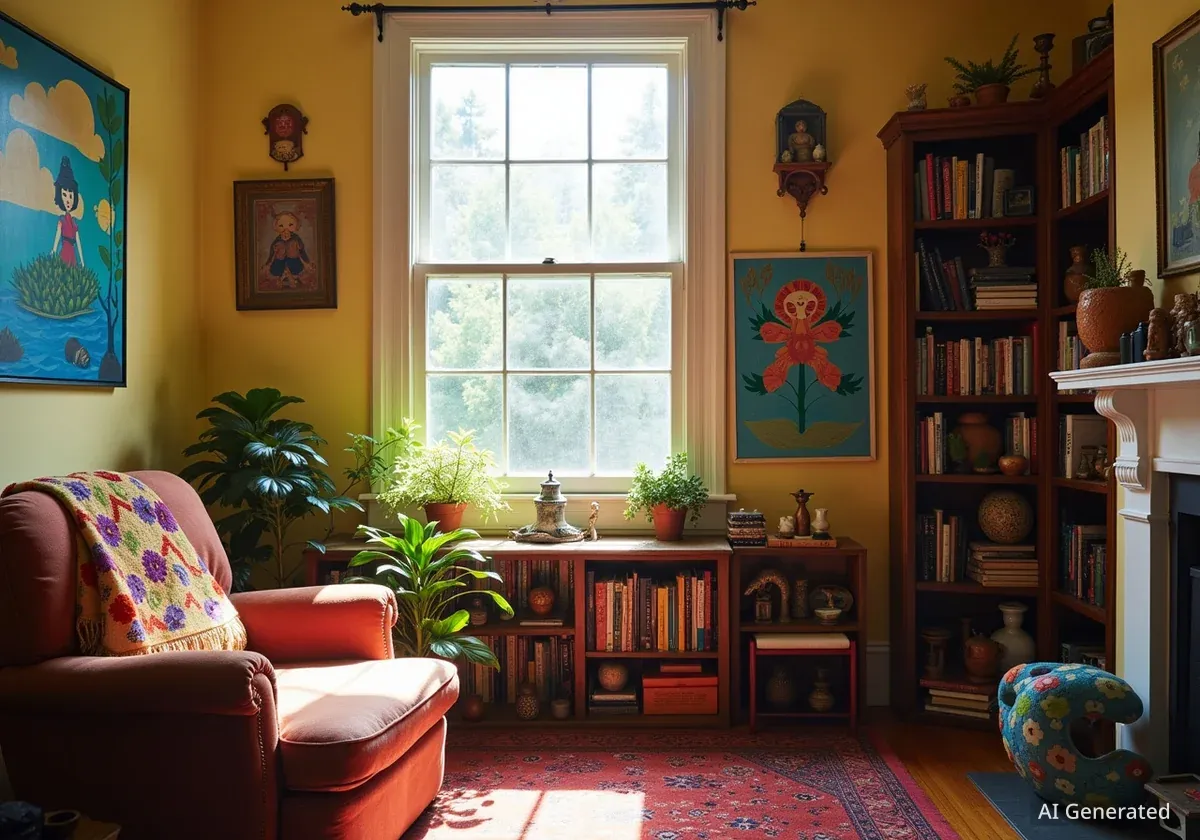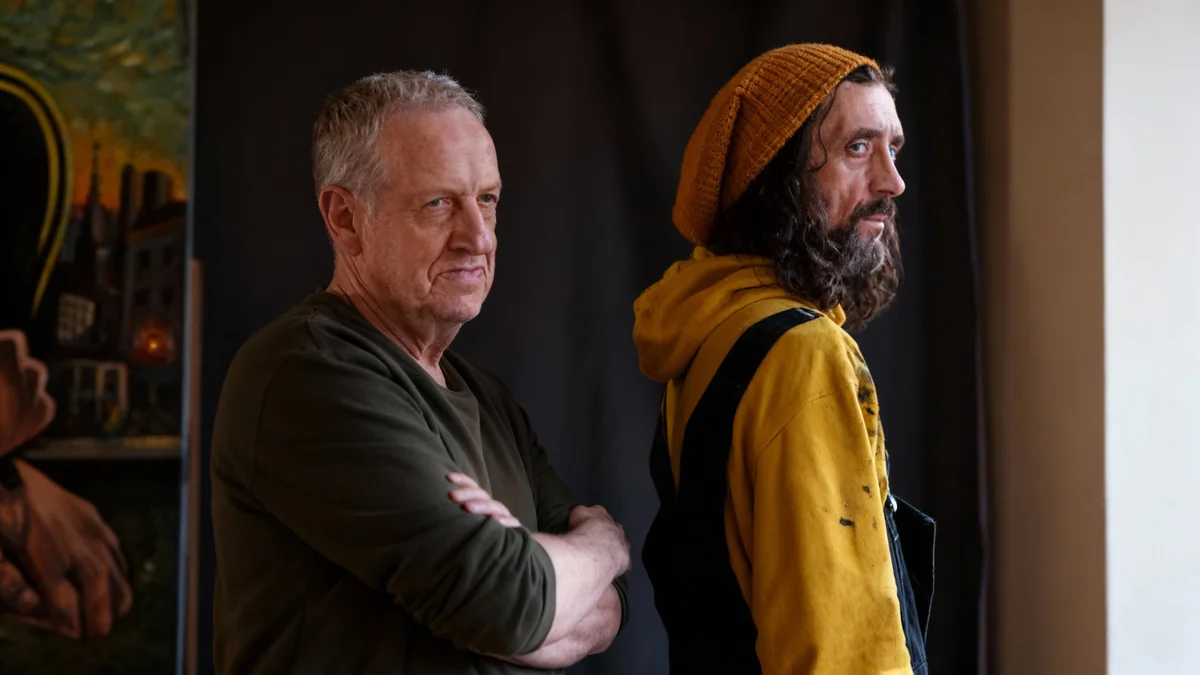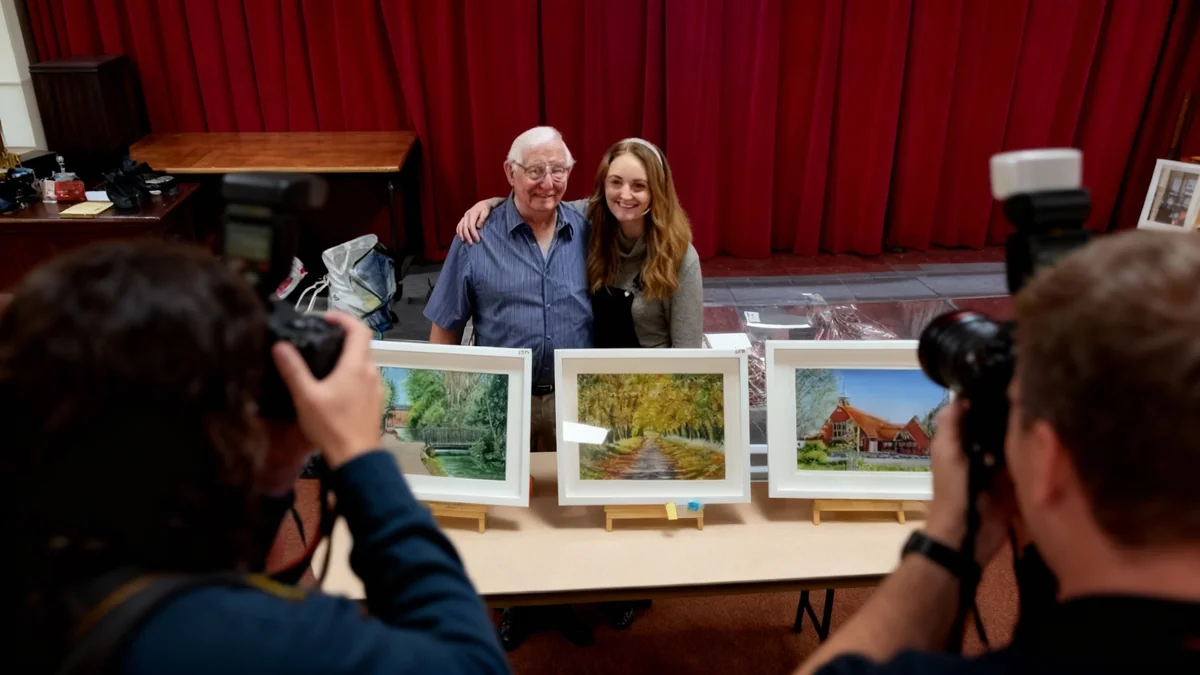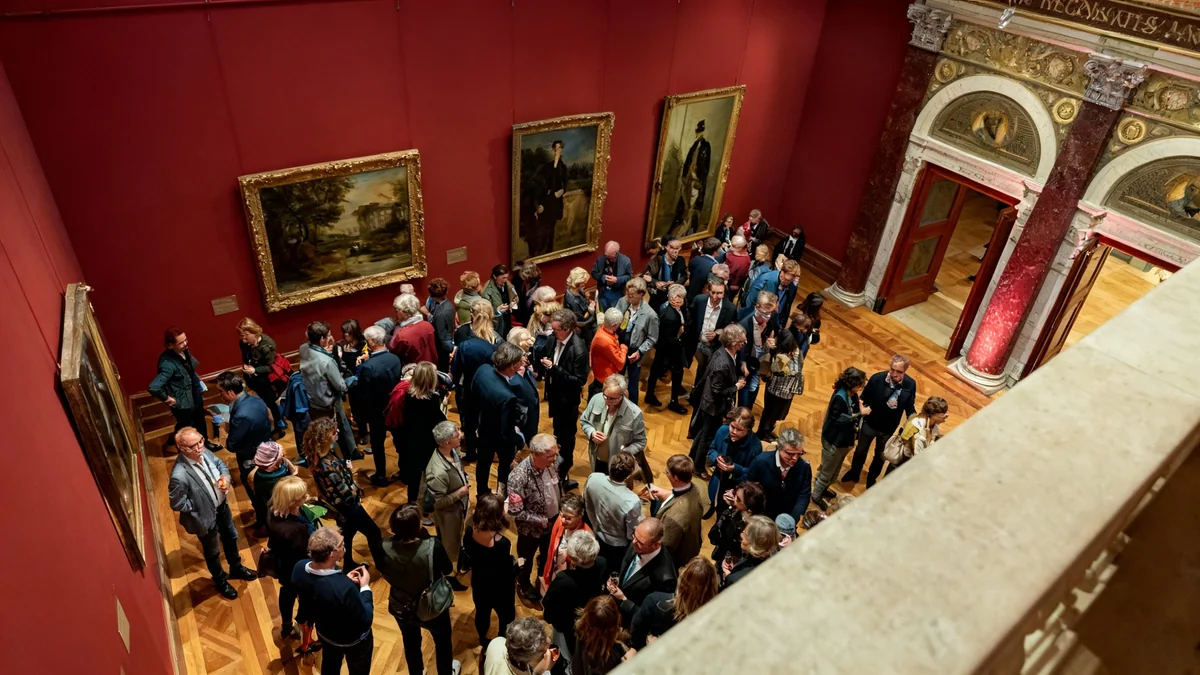A historic 1908 home in Southwest Portland serves as both a living space and a dynamic creative hub for artists Kimberly and Peter Gronquist and their three children. The four-story residence, filled with an eclectic mix of art, books, and personal collections, reflects a family ethos of spontaneity and artistic expression.
Key Takeaways
- Kimberly and Peter Gronquist live in a 1908 Southwest Portland home.
- The house is a center for art, personal collections, and family life.
- Peter grew up in the home, which was owned by his artist parents.
- Kimberly, a sculptor, found a safe space in the home during her youth.
- The couple returned to the house in 2011 and raised their three children there.
- The home blends historic charm with modern artistic elements and pop culture.
- Kimberly Gronquist rediscovered her passion for sculpture after a career in nursing.
A Century-Old Home with Artistic Roots
The Gronquist family resides in a 1908 house in Southwest Portland. This home is not just a place to live; it is a continuously evolving canvas. The structure itself has a rich history, being the childhood home of Peter Warren Gronquist, 46. His parents, both artists, raised him within its walls. His father, Don Gronquist, is a filmmaker.
Kimberly Gronquist, also 46, first encountered the home during her middle school years. She attended West Sylvan Middle School with Peter. For Kimberly, whose childhood home lacked warmth, Peter's house became a refuge. This connection to the house deepened over time.
Home History Snapshot
- Year Built: 1908
- Original Owners: Peter Gronquist's artist parents
- Current Residents: Kimberly and Peter Gronquist and their three children
- Return to Home: 2011, after living in California
Eclectic Design and Personal Collections
The interior of the Gronquist home reflects the family's diverse interests and artistic inclinations. Floor-to-ceiling shelves in the living room display a wide array of items. These include fantasy novels, encyclopedias, historical texts, and pop fiction. Alongside books are old Barbie dolls, a pink alligator figure, a maneki cat, and baskets filled with masks. A toy banana also finds its place among the collections.
Kimberly Gronquist describes the accumulation of items as a natural process.
"We’re stuff people," she states, highlighting the family's tendency to collect.
The four floors of the house offer varied experiences. The basement features multicolored disco lights and a half-pipe. Wild ceramic pieces adorn the walls throughout the home. Dried eucalyptus wreaths hang on door frames. An airy atrium provides views of an English-style garden. The overall aesthetic blends eclecticism with warmth.
Defining Eclectic Design
Eclectic design combines elements from various styles, periods, and origins into a cohesive whole. It often involves mixing textures, colors, and patterns. In the Gronquist home, this approach creates a unique and personal atmosphere, reflecting the residents' individual tastes rather than adhering to a single design trend.
A Space for Playfulness and Creativity
Despite the abundance of items, Kimberly Gronquist notes the intuitive and playful nature of the home's design. She emphasizes that the arrangement is not overly planned.
"It’s totally not thoughtful," she says, implying an organic development of the space.This approach aligns with the home's long history and its artistic spirit.
After their marriage, Kimberly and Peter lived in California for a period. They returned to Portland in 2011 when the house was passed down to them. Kimberly views this return as a deeply personal experience.
"This had been my safe place to begin with, and coming back was cathartic," she explains.
The couple now lives in the house with their three children: Dove, 16; Wolfie, 12; and Cozy, 10. The home has undergone some renovations, including updated bathrooms and an industrial-chic kitchen with wide white tiles. However, it retains much of its original character, with wide windows and three fireplaces.
Pop Culture and Family Fun
The house is designed for enjoyment and family activities. A jukebox, though currently broken, is a prominent feature in the second living room, with an Alexa device tucked inside for music. One bathroom features fuzzy Star Wars stormtrooper helmets as wallpaper, adding a playful touch. A dedicated game room for the children includes a purple-lit play nook.
Pop culture references are visible in many corners of the home. Kimberly stresses the importance of balancing these elements to prevent the space from feeling overwhelmed. She acknowledges that managing the family's collections is a constant effort.
"They’re all collectors," she says of her family. "It’s hard to keep up with all the things they’re bringing home. I make sure not to become buried in that or I’ll feel heavy."This highlights a practical challenge within their creative lifestyle.
Kimberly's Artistic Journey and Primal Feminism
While Peter Gronquist pursued art from a young age—a childhood declaration of his artistic aspirations hangs in the office—Kimberly's path was different. She initially suppressed her artistic desires and became a nurse. After taking time to raise her children, she gradually returned to her creative calling.
Kimberly's artistic focus is primarily on ceramics. Her sculptures often explore shapes that merge feminine and oceanic themes. She describes her work as "primal feminism." Her studio, located in the garage behind the house, is a dedicated space for this process.
The creation of her art has been a transformative experience.
"I was pounding out trauma from my body; it wasn’t always comfortable, but it was a necessity. It felt frantic," she shares.
Kimberly Gronquist's Artistic Evolution
- Early Career: Nursing
- Current Focus: Ceramic sculpture
- Artistic Theme: Primal feminism, blending feminine and oceanic forms
- Exhibitions: Showed work at Spartan Shop
After exhibiting her work at Spartan Shop, her artistic career continued to develop. Kimberly emphasizes that her creative process is fluid, without strict rules or a definitive endpoint. She views both her art and her home as continually evolving projects. She aims to maintain a sense of curiosity and playfulness in her work, encouraging others to let go of rigid expectations.
"You can continue the work," she concludes. "It doesn’t have to stop in the kiln."This statement reflects her belief in the ongoing nature of creativity and personal growth.




